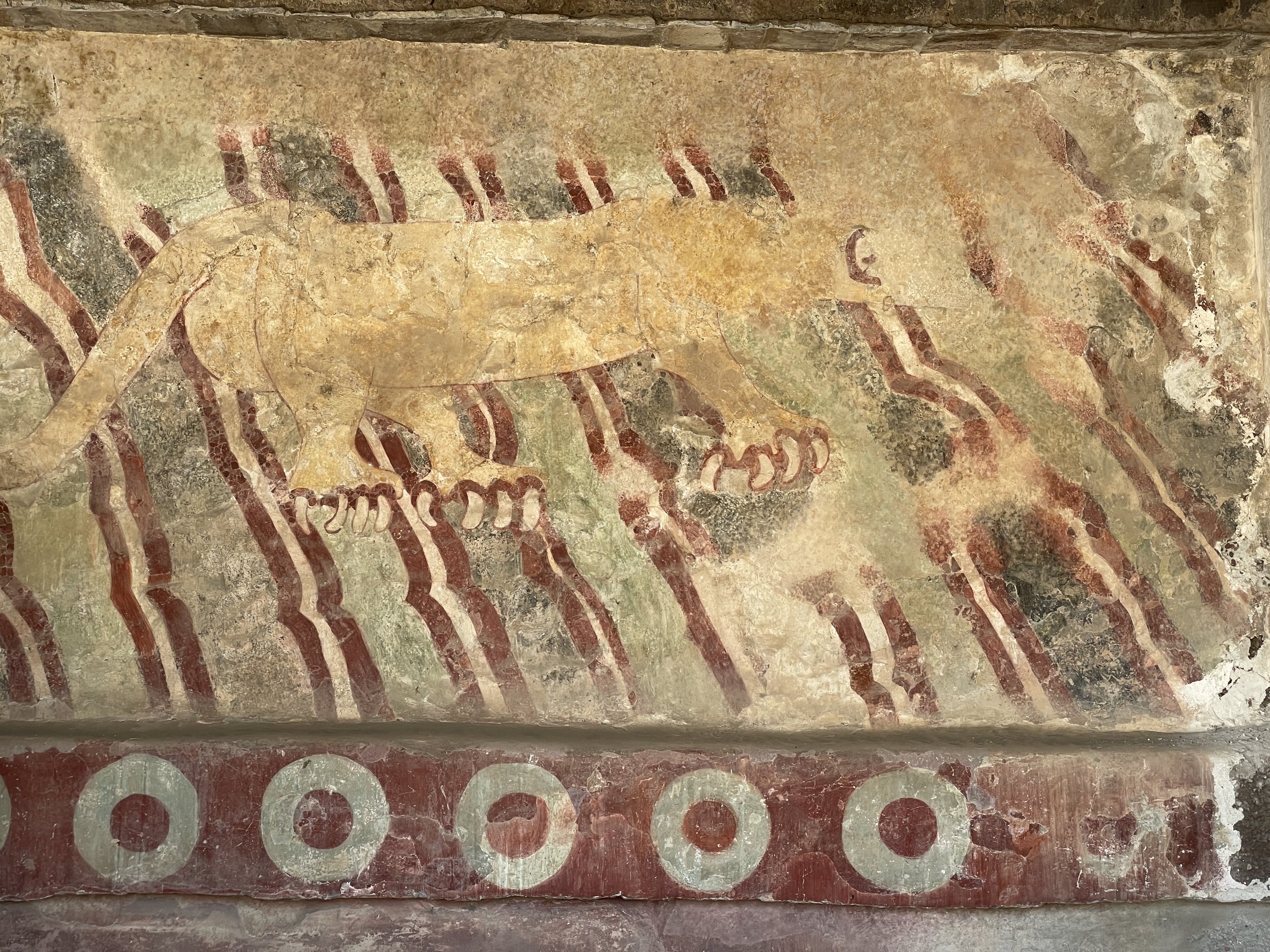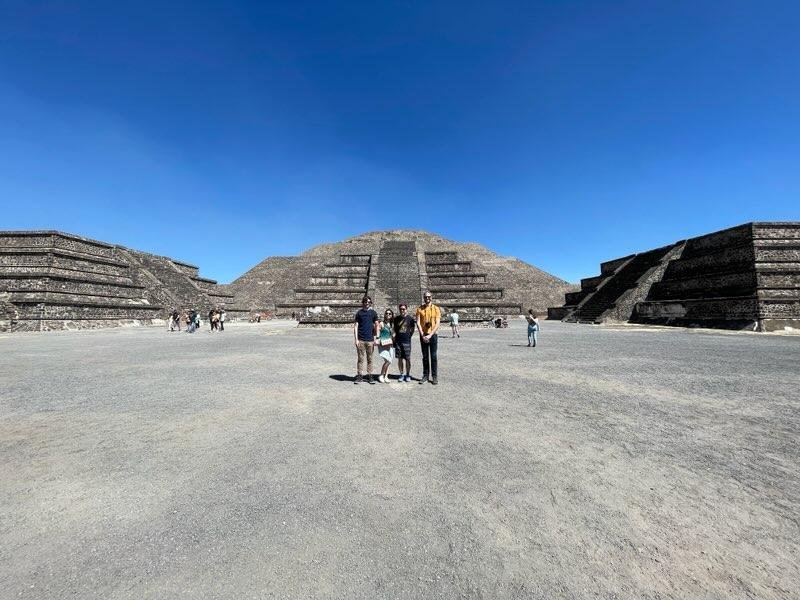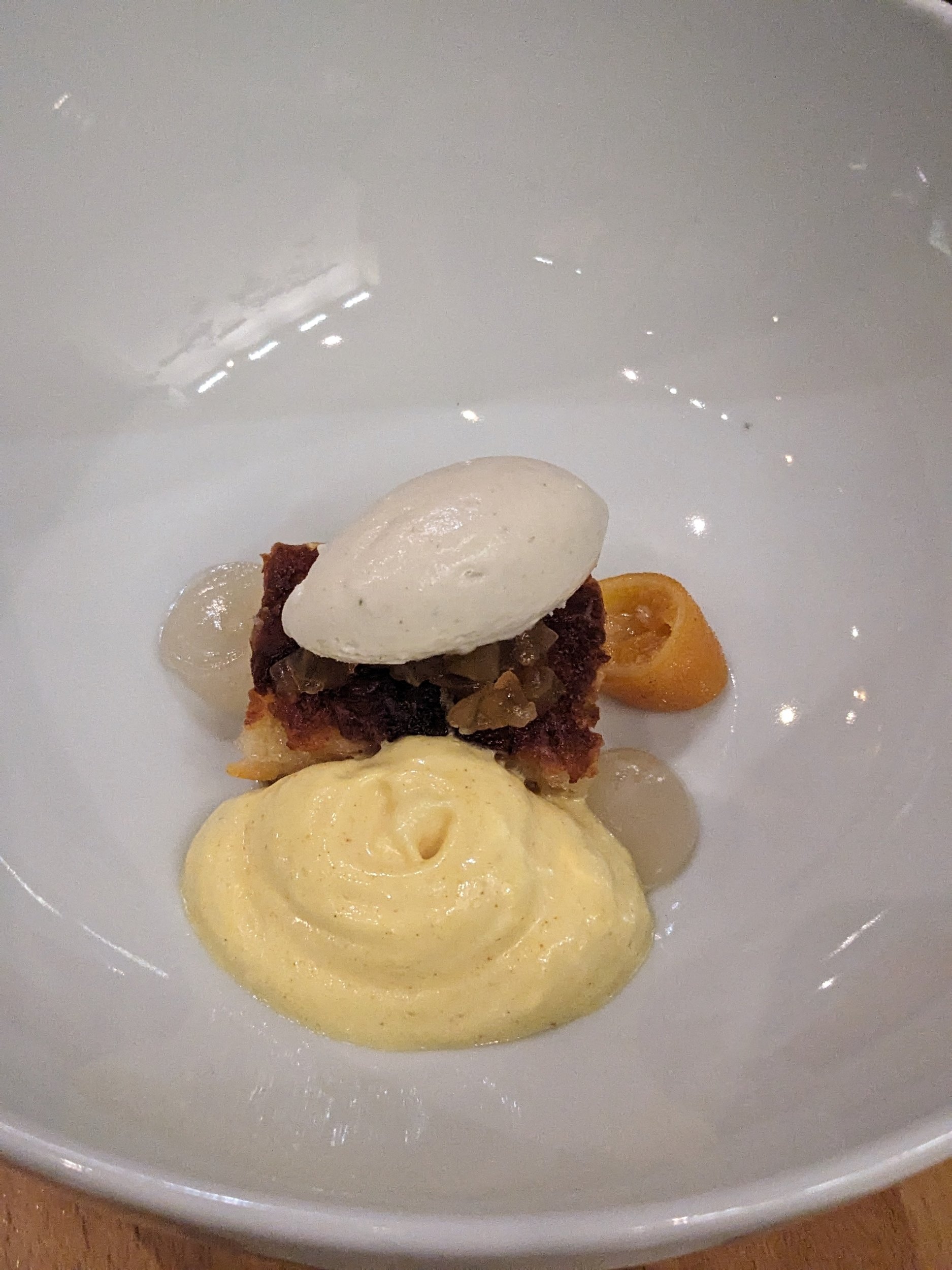Mexico City, Day 5: Teotihuacán and other old things
In our last full day in Mexico, we had the one activity we had planned out in advance, which unfortunately also meant an early start (out the door at 8am).
We hired a tour guide for the day, Jose Luis, and he explained the itinerary while driving us to Tlatelolco, the last Aztec holdout before the Spanish conquered them. It had a similar temple to what we saw in the Templo Mayor downtown, and had a similar fate, unfortunately: the Spanish dismantled most of the temple and used the stones to build a church on the same site.
Despite how little remains of the Aztec constructions, it’s still neat to see what does remain, as well as getting a great history lesson from Jose. Apparently, Moctezuma met with the Spanish and tried to make peace rather than fighting at first. Then he died mysteriously. And, surprise, the Spanish conquistadors rallied the tribes from the region that were under Aztec control (apparently quite brutal) and conquered them.
The worst part for the local tribes wasn’t the conquest itself, but the exposure to smallpox and other diseases, unfortunately. Around 90% of the population was lost within a decade (I think).
Depressing history aside, we also took a look at the 500-year-old church the Spanish built from the stones of this last Aztec temple. It’s in great shape (and obviously the inside has been updated over the years).
We finally headed off to Teotihuacán, which was definitely the highlight of the day. On the road, half the crew fell asleep (I blame the early start!), so our guide kept quiet rather than fill the time with a history lesson. When we arrived, we began with the backside of the temple of the Sun and despite its size, we were all a bit underwhelmed.
Jose Luis explained that this was not an Aztec site, though when the Aztecs arrived they adopted it as their own. It was built by a culture that we have very little modern information about, but one that would have rivaled the ancient Greeks or Egyptians. They had irrigation, streets, cement, and an impressive understanding of construction, based on what they left behind. In fact, this site was the center of a major city of 150,000 to 300,000 people. Before we got a good look at the rest of the city center, we got to the impressive side of the giant (64m?) Temple of the Sun:
Unfortunately, the first european archeologists who began exploring the site assumed these were tombs in the same style as Egyptian pyramids, so they dynamited a bunch of spots looking for an opening. They were wrong, and later archeologists attempted to reconstruct the damaged areas, meaning not all of this is exactly as it was. But the main steps up the center are original, as is the bulk of the structure.
From here we also got our first views of the main street (named “street of the dead” by the Aztecs). It was a straight line for 3.5 miles leading into the heart of the city, where the other big temple is. Based on other finds in the area, the city likely sprawled over at least 15 square miles.
As a friendly dog joined us on the long walk to the temple of the Moon, Jose Luis directed us to some original paint that’s still intact, including a mural of a Puma near water:
Apparently, they mined a mercury-heavy mineral in the mountains to create the pigment, which is why it has held up so long. Also might help explain the short lifespans they had (typically 30-35 years). On that note, all the rocks used for construction were carried by hand from surrounding mountains many miles away. The cement was a mixture of calcium carbonate (probably from limestone), sand, and nopal juice. It formed a very firm plaster-like material that has lasted for 2000 years (much like Roman cement). Though, the parts you see that have little rocks in the cement are from reconstruction and are not original.
We finally arrived in the center of town, which was built after the earlier (but bigger) temple we’d already seen.
Everything here is square, and built with powers of 3: the stairs are 1/3 the width of the entrance to each building, and if you measure the relative size of things, you get ratios of 9 and 81. Beyond that, all the buildings in the main square are symmetric and perfectly aligned. Hard to imagine how they did all that without measurement tools or a laser level! Here’s a little panoramic with us in the middle:
As the last part of the visit here, our guide walked us to a well-preserved “priest” building that has intact wall paintings. This gives us the best insights into their society, religion, and self-image. Agriculture, in particular, is well represented, but so are dogs, as well as seafood from the ocean, which is 400km away by modern means of transport (and must have been months away on foot through the mountains back then).
After wrapping up, we were hungry and stopped by a nearby restaurant our guide recommended for lunch. As is typical, it’s one of those places that all the guides bring their tours to, so it was full of other foreigners and was, TBH, mediocre. But, the hibiscus margarita and horchata were good, at least!
Our final stop on the tour was Basilica de Santa Maria de Guadalupe, the most visited catholic shrine in the world, outside the Vatican. It’s a huge site, with a big open square, six churches, and a really weird clock tower thing.
The back story is set ten years after the Spanish conquest, and involves a native Aztec man whose uncle was dying of smallpox. He had visions of Mary on a hill, but looking like an Aztec woman. She made him bring flowers to a priest, and the flowers somehow stained his cloak in her image. The exact cloak (according to the catholic church) can be found inside the round mega church (capacity ~12,000) built in the 70s. In fact, there’s a dedicated viewing area with moving walkways that we went through to get a closer look:
According to 20th century studies, the cloak fiber does date to the 1500s, and there are some pigments from the same timeframe, though much of what you see dates to paint added in the 1700s. I believe the church referred to that as “restoration”.
The other interesting note is that the original church set up here (also from the 1700s) is sinking and will likely fall over. The ground under CDMX has been settling unevenly since the Mexican government drained the lakes a century ago to make more available land. I’m not sure the photos capture it well, but walking into the church you can really feel the slope.
After heading back to our condo, we made a quick stop by the nearby Gong Cha for bubble tea (and a pharmacy for a bit of Aloe Vera).
Finally, we ended our trip with a wonderful dinner at Migrante. The food and service were truly delightful, and instead of throwing words at it, I’ll just leave you with these photos:
Mexico City really impressed us. You can dive into food, art, fashion, and history here, without ever exhausting any one part of it. On the flip side, the smog, the traffic, and the city noise definitely left us tired at the end of each day. I’m glad we came here, and I’m sure we’ll come back again!
I’ll be dreaming of delicious salsas for weeks to come…






























































